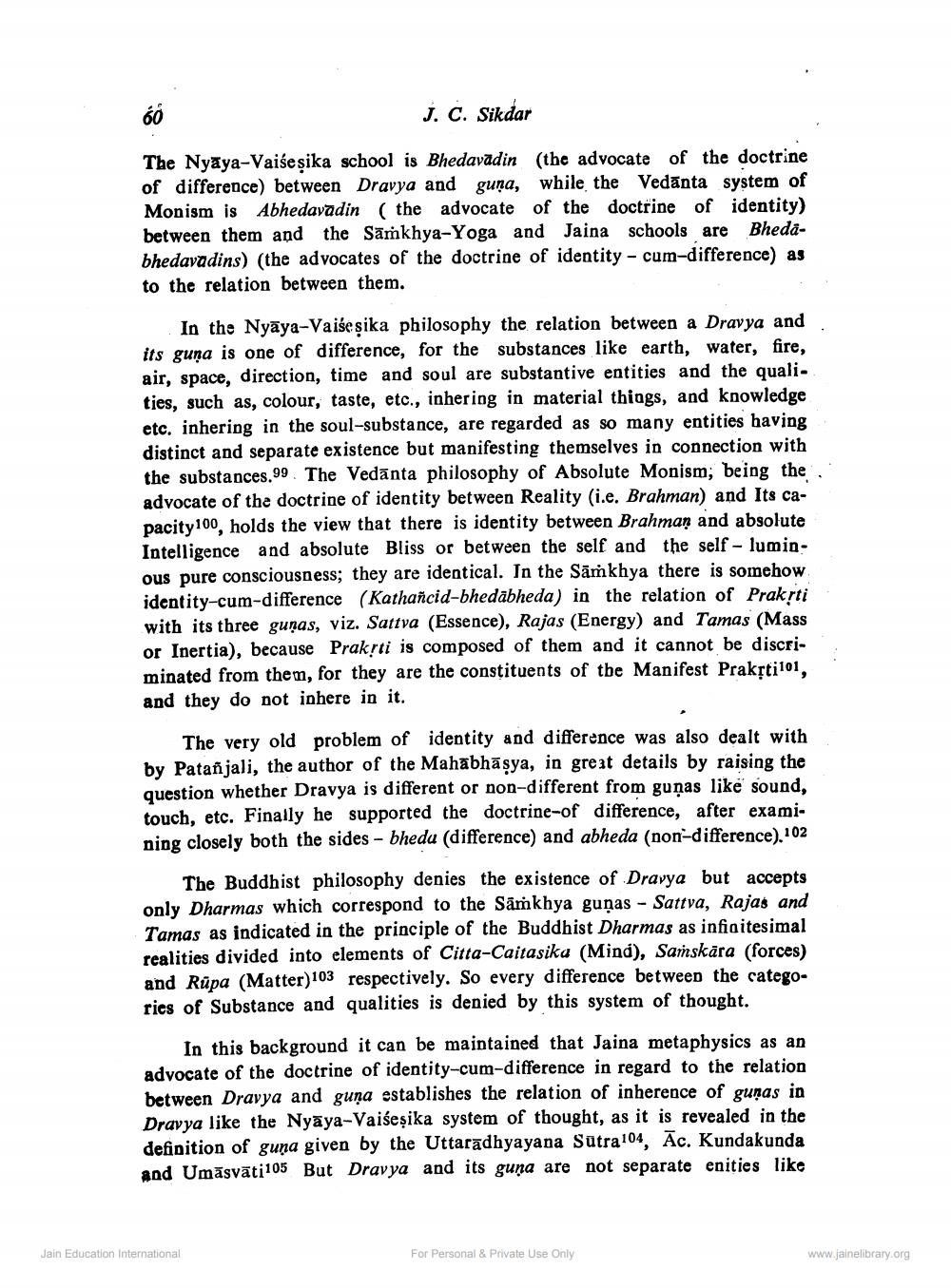________________
J. C. Sikdar
The Nyāya-Vaiseșika school is Bhedavādin (the advocate of the doctrine of difference) between Dravya and guna, while the Vedānta system of Monism is Abhedavadin (the advocate of the doctrine of identity) between them and the Sāṁkhya-Yoga and Jaina schools are Bhedabhedavadins) (the advocates of the doctrine of identity - cum-difference) as to the relation between them.
In the Nyāya-Vaise şika philosophy the relation between a Dravya and its guna is one of difference, for the substances like earth, water, fire, air, space, direction, time and soul are substantive entities and the qualities, such as, colour, taste, etc., inhering in material things, and knowledge etc. inhering in the soul-substance, are regarded as so many entities having distinct and separate existence but manifesting themselves in connection with the substances.99. The Vedānta philosophy of Absolute Monism, being the advocate of the doctrine of identity between Reality (i.e. Brahman) and Its capacity 100, holds the view that there is identity between Brahman and absolute Intelligence and absolute Bliss or between the self and the self- luminous pure consciousness; they are identical. In the Sāmkhya there is somehow identity-cum-difference (Kathañcid-bhedābheda) in the relation of Prakrti with its three guņas, viz. Sattva (Essence), Rajas (Energy) and Tamas (Mass or Inertia), because Prakrti is composed of them and it cannot be discriminated from them, for they are the constituents of the Manifest Praksti101, and they do not inhere in it.
The very old problem of identity and difference was also dealt with by Patañjali, the author of the Mahabhāşya, in great details by raising the question whether Dravya is different or non-different from guņas like sound, touch, etc. Finally he supported the doctrine-of difference, after examining closely both the sides - bheda (difference) and abheda (non-difference).102
The Buddhist philosophy denies the existence of Dravya but accepts only Dharmas which correspond to the Samkhya guņas - Sattva, Rajas and Tamas as indicated in the principle of the Buddhist Dharmas as infinitesimal realities divided into elements of Citta-Caitasika (Mind), Saṁskāra (forces) and Rupa (Matter)103 respectively. So every difference between the categories of Substance and qualities is denied by this system of thought.
In this background it can be maintained that Jaina metaphysics as an advocate of the doctrine of identity-cum-difference in regard to the relation between Dravya and guņa establishes the relation of inherence of gunas in Dravya like the Nyāya-Vaiseșika system of thought, as it is revealed in the definition of guna given by the Uttaradhyayana Sutra104, Āc. Kundakunda and Umāsvāti105 But Dravya and its guna are not separate enities like
Jain Education International
For Personal & Private Use Only
www.jainelibrary.org




